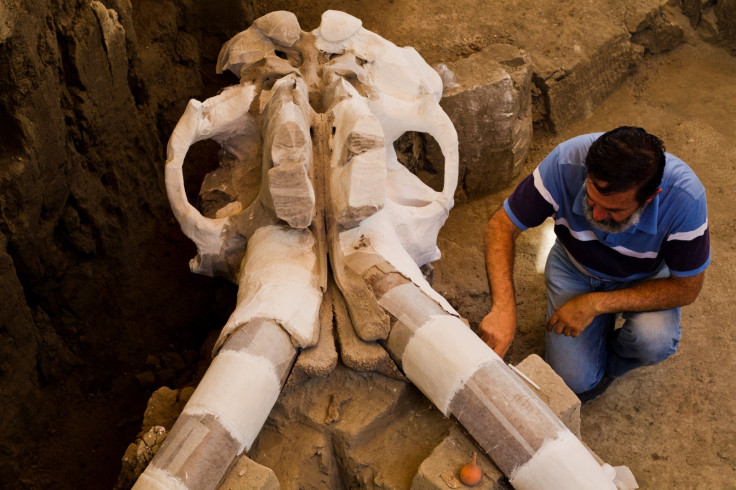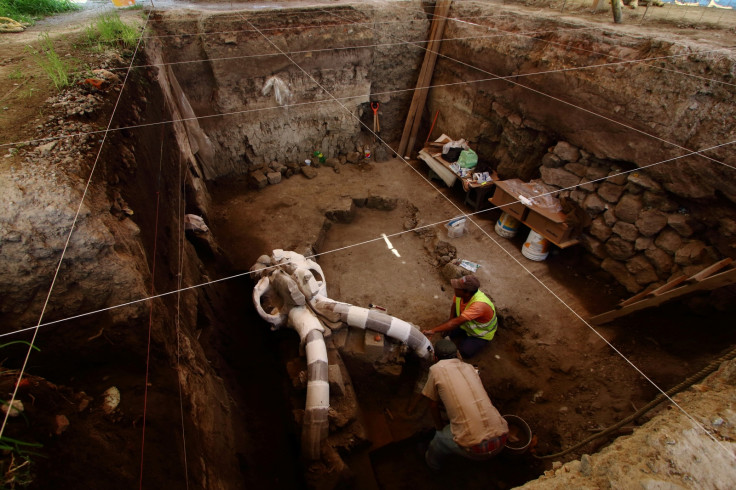Huge mammoth discovered beneath Mexico village reconstructed
Mammoth fossil was discovered beneath Tultepec while drains were being installed.
A huge mammoth fossil discovered beneath a village near Mexico City has been reconstructed. Images show scientists painstakingly cleaning and restoring the fossil, which is believed to be between 12,000 and 14,000 years old.
The mammoth was found in December 2015 near Tultepec while some drains were being installed. It was just 2m beneath the surface. The area once had a shallow lake, in which heavy mammoths would get stuck and die – other mammoth remains have been found in regions of Mexico in the past.

The Tultepec specimen appears to have died in the lake. Its remains showed signs of being cut up by humans for its meat and fur.
It is thought the mammoth was between 20 and 25 when it died. Excavators found ribs, tusks, its meter-wide skull and vertebrae. It would have been 3.5m tall, 5m long and weighed up to five tonnes.
At the time, Luis Cordoba, an archaeologist with the National Institute of Anthropology and History, told AFP that while over 50 mammoths have been found in the area in the past, "this is the first time that they can be studied because in general people do not report the finds in time".
The specimen belongs to the Columbian mammoth sub-species that lived across the US and Central America. This species was larger than many others, with the potential to grow up to 5m in height and weigh 10 tonnes.
They disappeared during the Quaternary extinction event, with the most recent remains dating to 11,500 years ago. During this extinction event, 40 large mammal species were wiped out. At present, it is thought a combination of climate change and hunting drove the Columbian mammoth to extinction.










© Copyright IBTimes 2024. All rights reserved.






